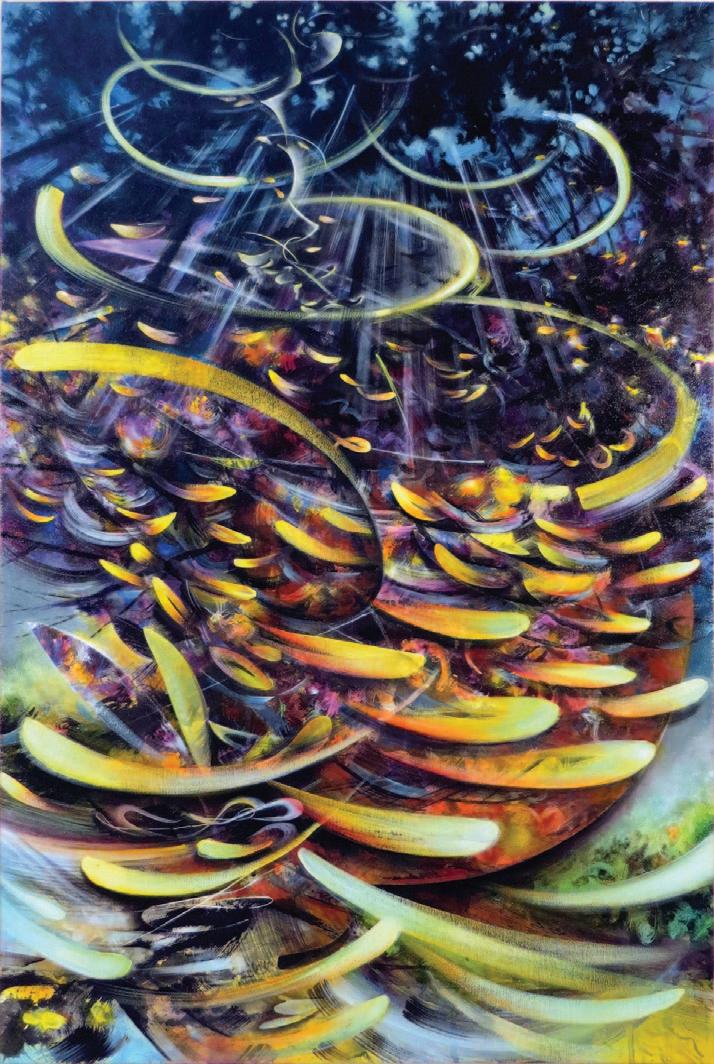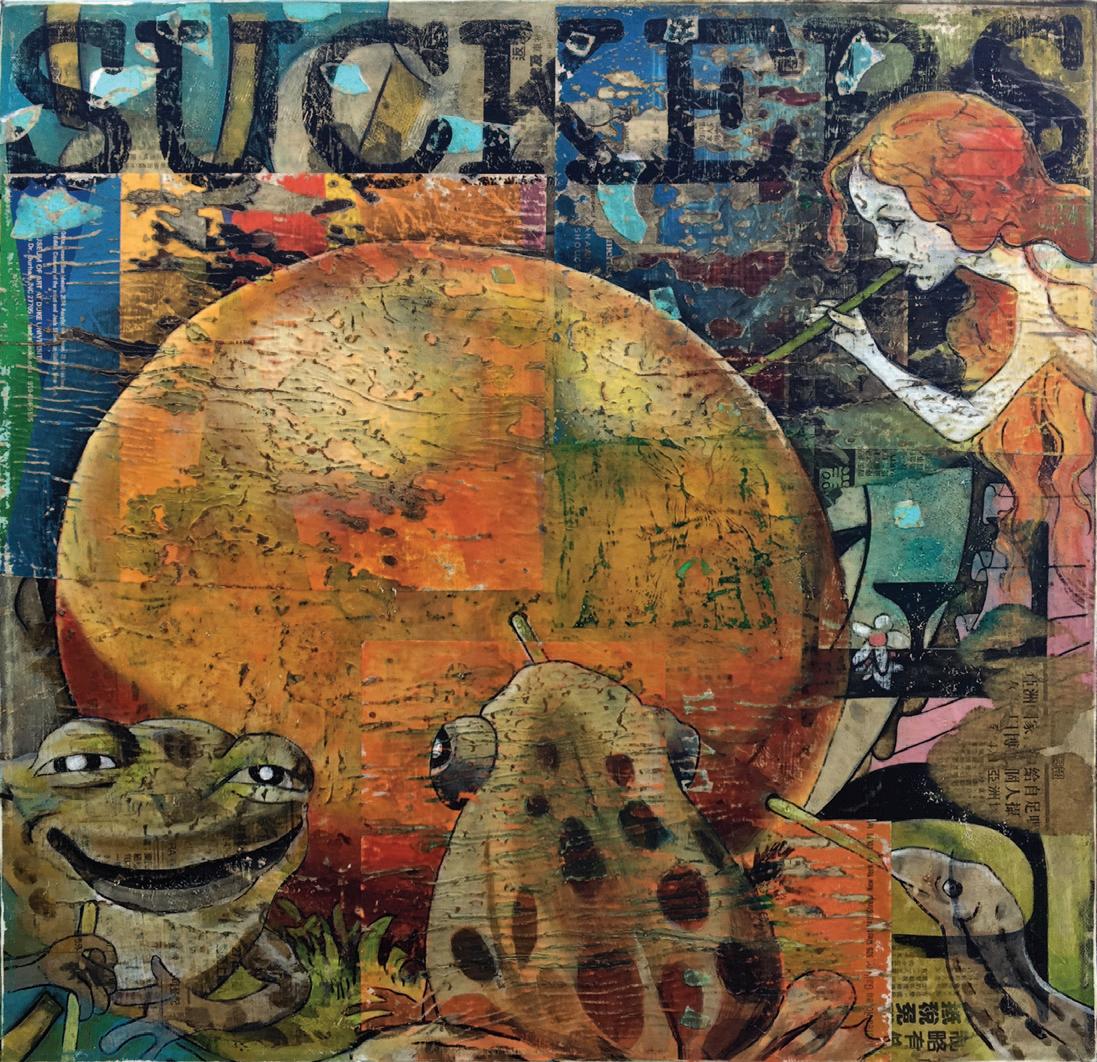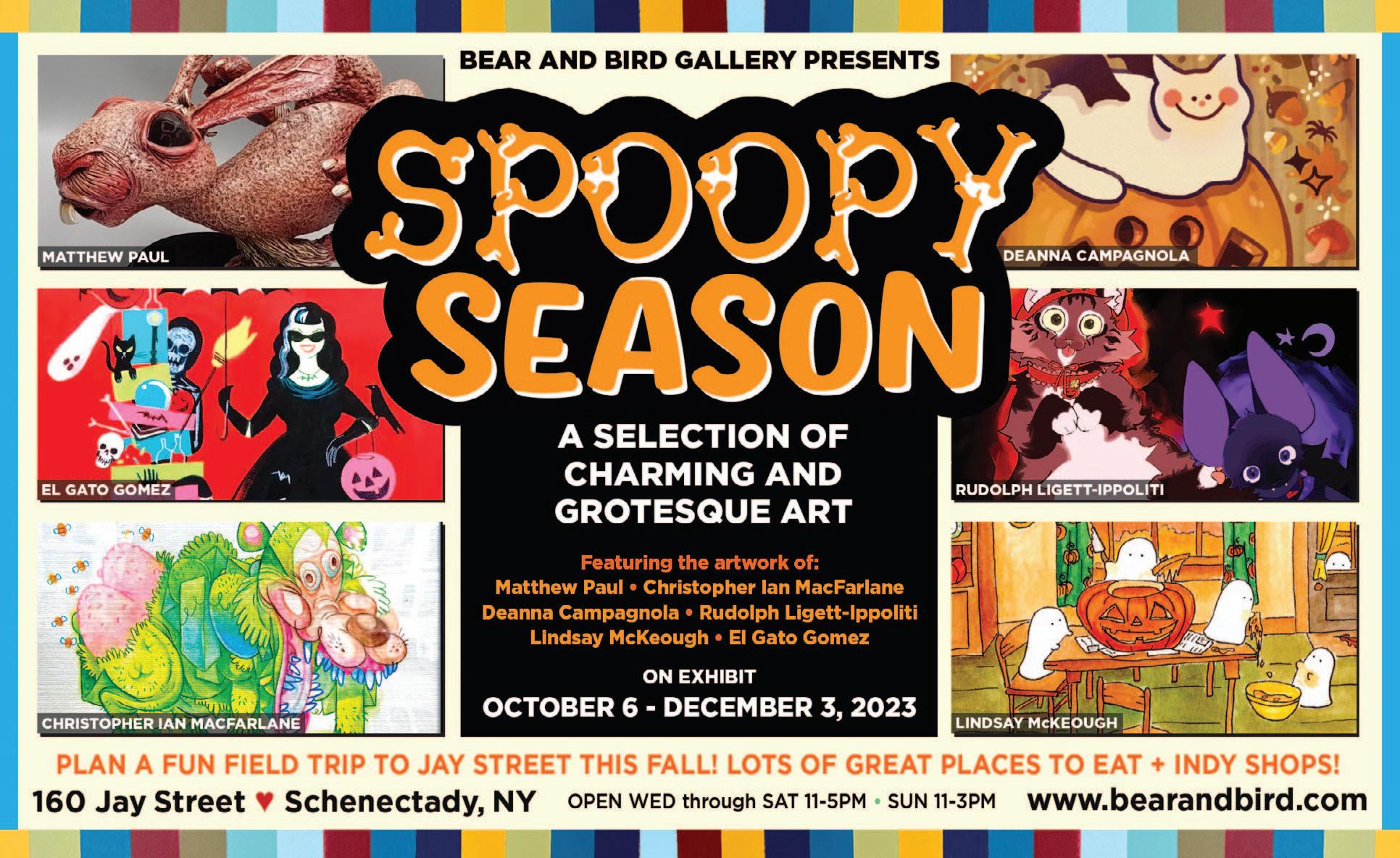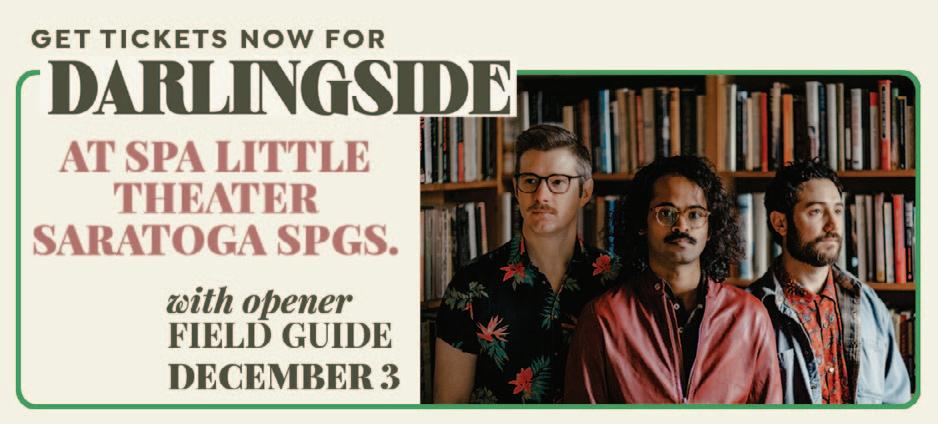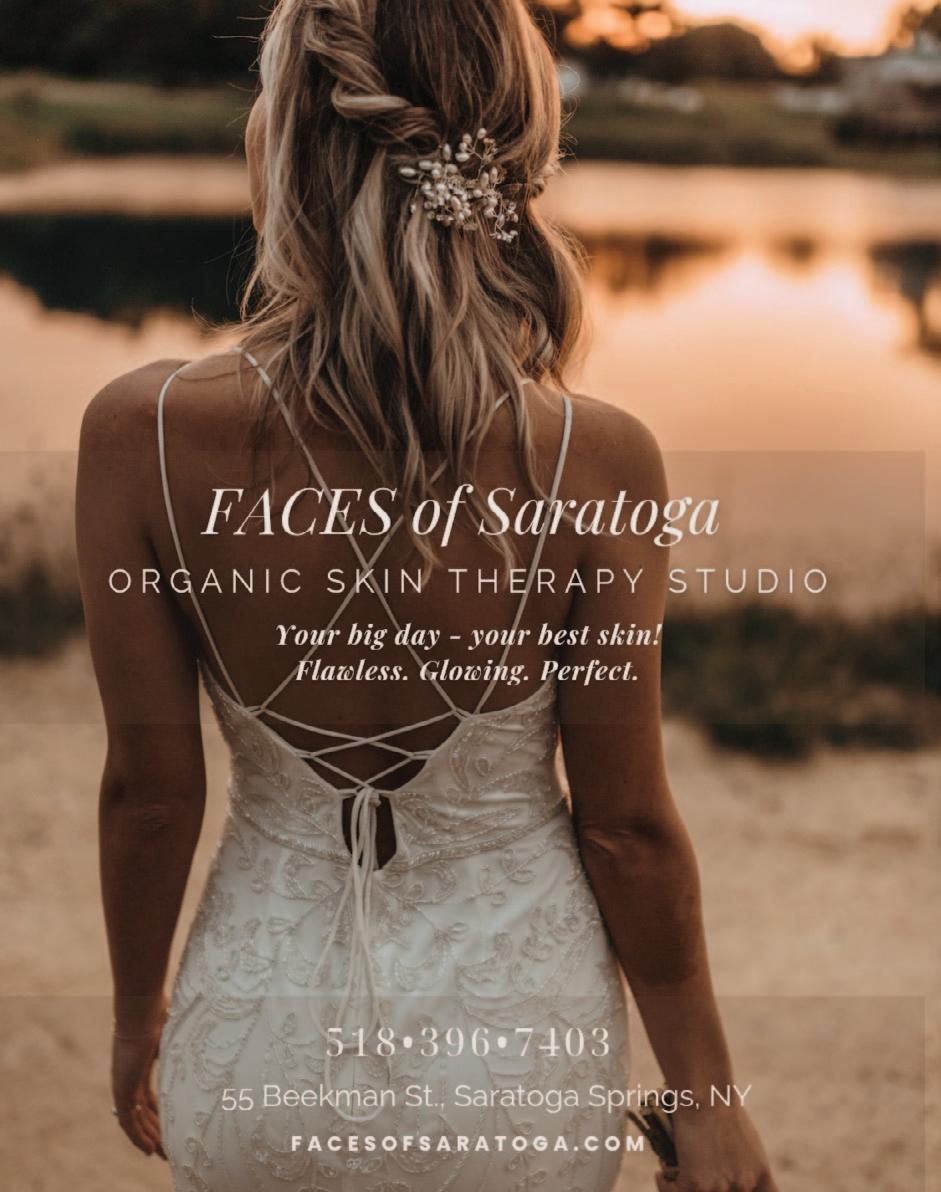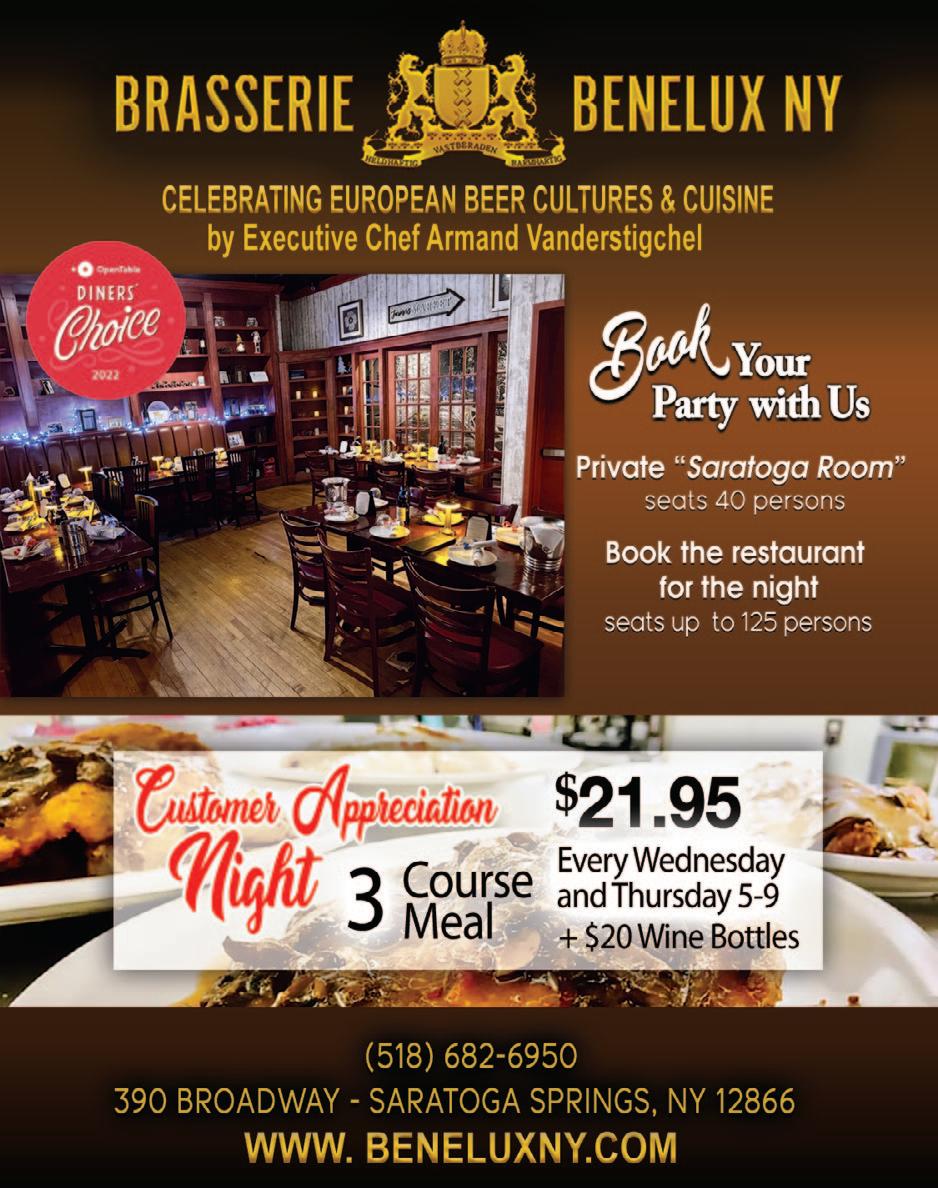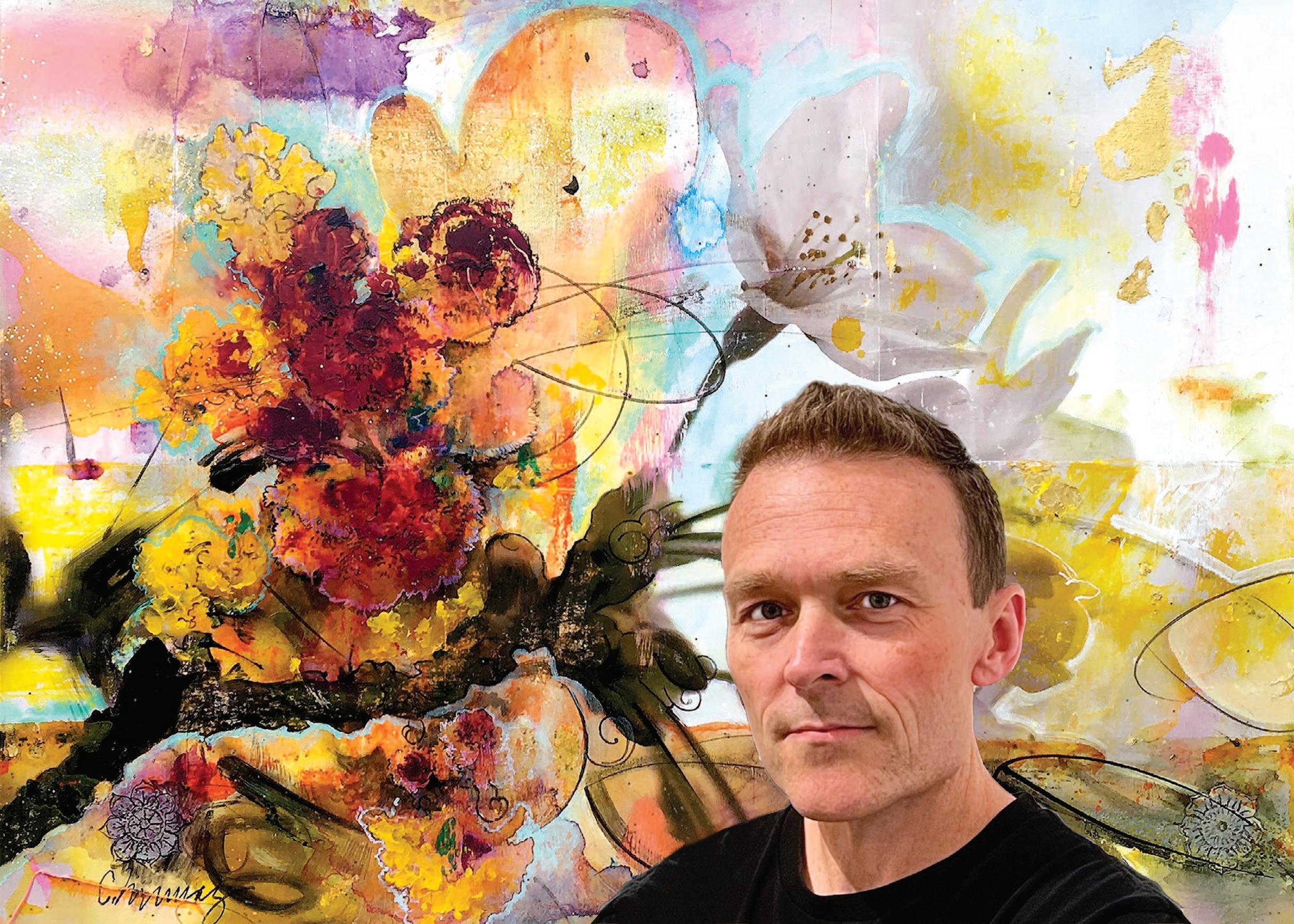
6 minute read
The Cultivation and Journey of an Artist/Educator: Christopher Murray
By Alan B. Richer
Christopher Murray, the oldest of five children, was raised in the Pleasantdale section of North Troy in a home environment perfect for developing a future artist. His parents actively took their children to museums, ballet at SPAC, and other cultural performances. There is a photo of Christopher as a young toddler in his stroller laughing in front of a William-Adolphe Bouguereau painting at the Clark Art Institute in Williamstown, MA.
Advertisement
Both parents encouraged all their children to create. The dining room table was the family’s crafts center. Large poster boards covered the floor in the living room with markers that were used to decorate for birthdays and holidays.
The backyard and their grandfather’s farm were other creativity zones. Murray and his siblings made teepees and forts from scraps of wood and assisted their mom in designing and making flower gardens. They played with two art drawing toys, Spirograph and Etch-A-Sketch, to make graphic designs.
Other family members influenced the children. Their Aunt Jeanette drew pen and ink and watercolor drawings of famous locations in France, California, and Hawaii that she assembled into books. She had Chinese and other Asian art on the walls of her house that left a lasting impression on her nephew.
Murray’s Uncle Steve did architectural design work for hospitals. He gave Christopher his folding wooden table and supplies such as a T square, triangles, rulers, and an architect’s Leroy lettering set that had etched letters with different writing styles. Murray’s fondest memory was discovering what various tools could do.
In Kindergarten, Murray showed an interest in art. Beginning at the age of seven, his mom and his school both encouraged him to submit drawings for the annual human rights contest in Troy. During the 1980 Winter Olympics in Lake Placid, NY, Murray drew award winners receiving their medals on the podium complete with a banner that lifted off the page.
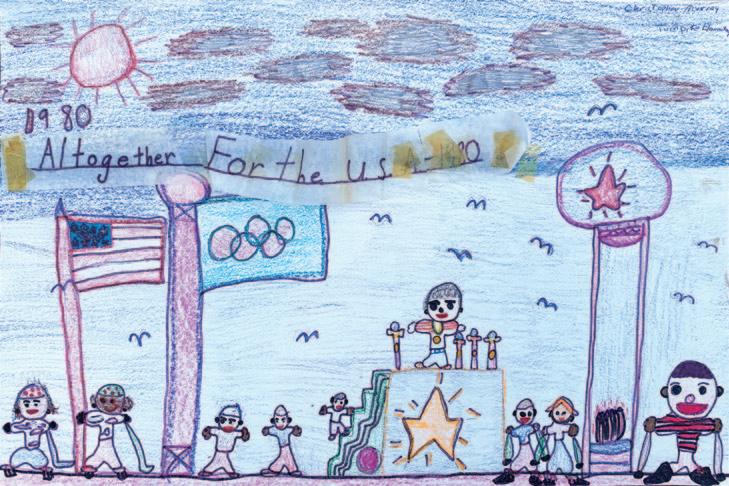
A summer program in high school at Sage Col lege of Albany exposed Murray to very tal ented fellow students that inspired him to improve his artistic skills. His high school guidance counselor got him a position at the Children’s Museum that was then located in the Lansingburgh section of Troy. There he worked on murals and installations about ani mal life and Native American culture.

He convinced his parents to buy a computer in high school and started doing computer art. Moving away from handmade art and transi tioning to working with a mouse and a monitor, Murray felt a lack of immediacy with his art. He wanted to touch his art and get his hands dirty. Rather than sitting inside in front of a computer for ten hours a day, Murray wanted to be outdoors to connect with his love of nature.
Murray accepted a full tuition scholarship from the College of St. Rose in Albany for graphic design. During the second semester of his freshman year, he changed his major to art education, the profession of multiple family members.

He found a lot of opportunities to develop his teaching method. From his sophomore to senior years, Murray taught at summer pro grams for elementary to high school children. While supplementing his income at a local restaurant, he made connections for teaching opportunities in both the Cohoes and Lansingburgh School Districts.
To further supplement his income, beginning in high school, Murray chose an entrepreneurial path for his art, designing t-shirts and posters for his friends’ bands, and designing tattoo.
During college, he started doing murals in children’s rooms and bathrooms and developed a talent to do faux finishing to look like marble or leather. Inspired by his aunt, he began doing house portraits in pen and ink as mementos for people selling their homes. Murray also illustrated children’s’ books.
Just four months after graduating the College of St. Rose in May of 1995, Murray began teaching art to middle and high school students at the Shenendehowa School District in Clifton Park. He initially taught five forty-minute classes a day, starting with the non-advanced classes.
Since the College of St. Rose was the only school in the Capital District that offered night classes which allowed him to continue teaching dur ing the day, Murray returned there to earn his Master’s in Art Ed ucation. It took him two and a half years to earn his degree, doing the requisite studio artwork from 4pm to 11pm.
An educator for twenty-eight years, Murray uses stories to teach his students to be independent and have a vision about wanting to make art. Over time, teaching has changed from teaching traditional sequen tial more complexed levels to less traditional exploratory, ex periential, and experimental processes.
Murray focuses his art on nature and the environment, and his layers represent the connection between parts.
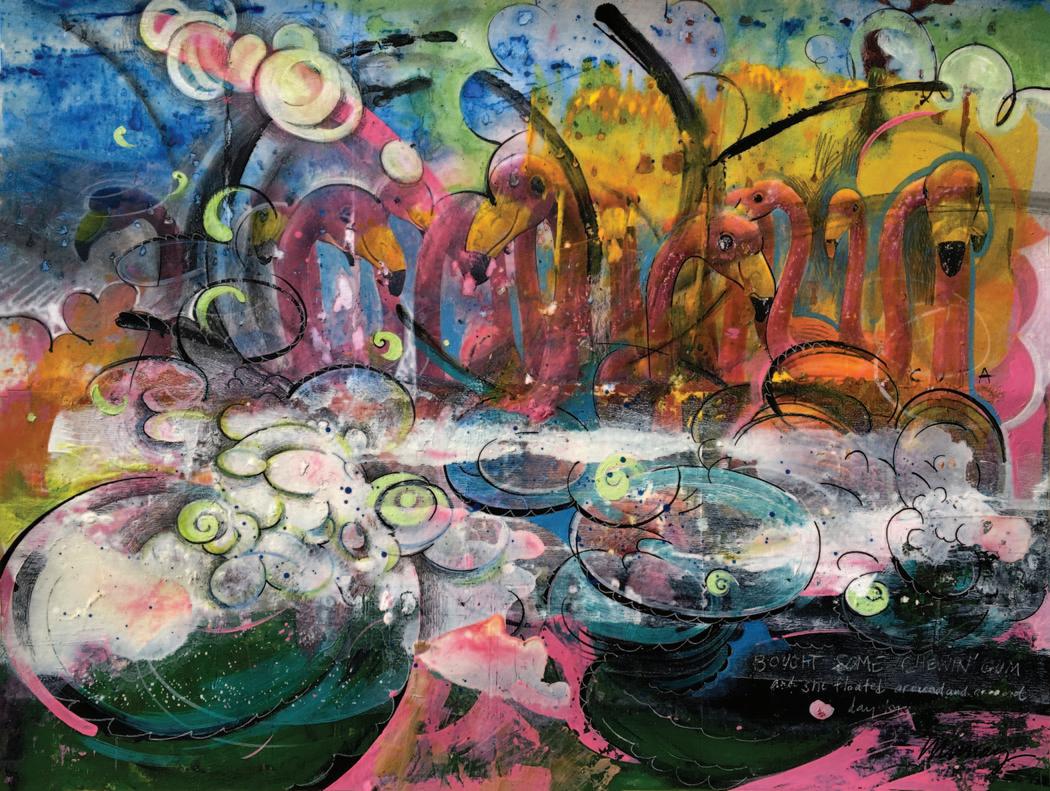
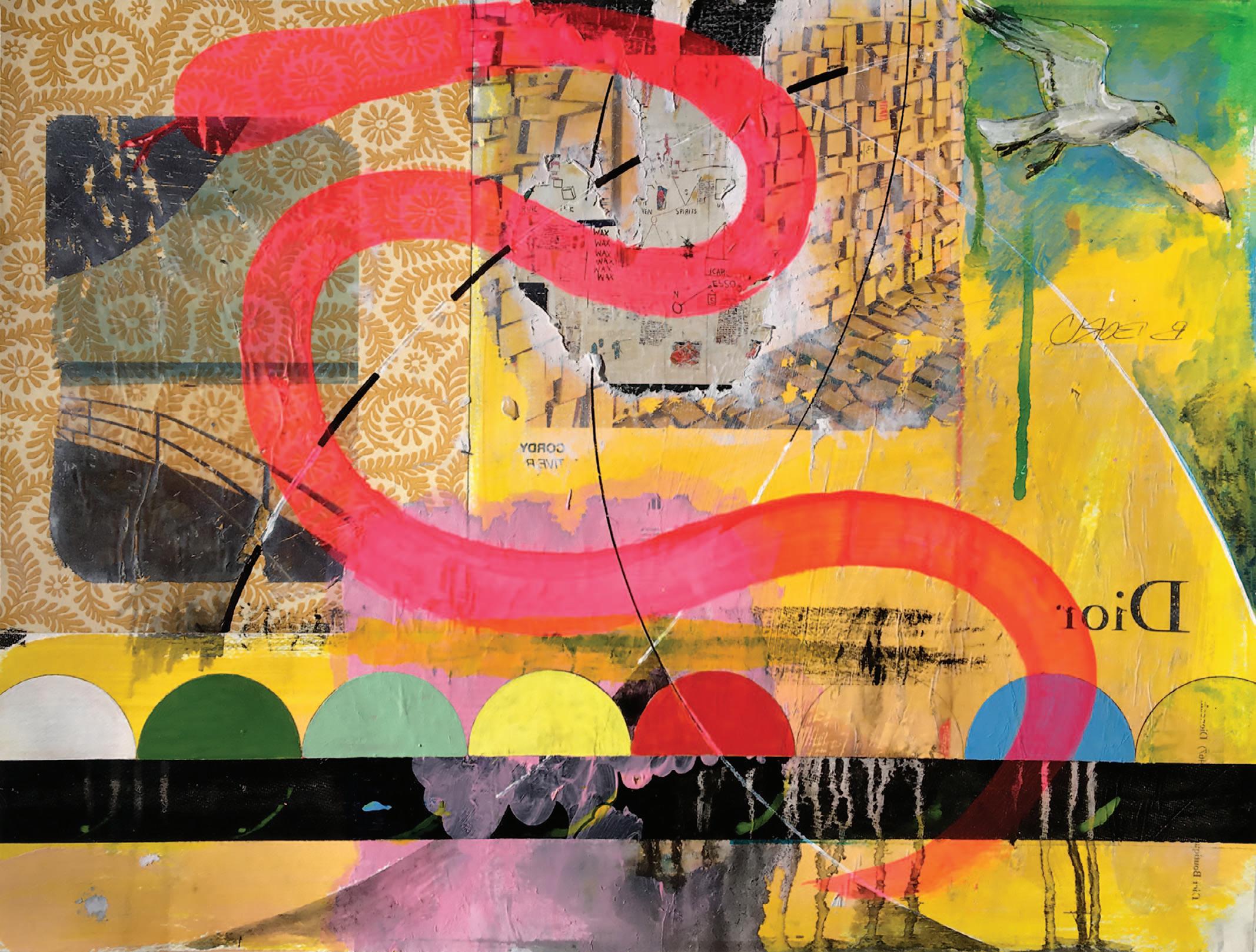
“I get inspired and think about how I can create an artwork that embodies the feeling and beauty of an experience, event, or place. The process of building and digging up layers of paint and collage allows me to imbed all my creative concerns into the canvas. “
Digging reminds him of his childhood when he would dig holes in his backyard for his toy army soldiers or matchbox cars. Scrapping and rebuilding is part of the process of making art.
In most of his artworks, he uses collage to build up layers. Early pieces con sisted mostly of Chinese newspapers scraps due to his appreciation of Asian art. Recent work incorporates the use of his digital photog rap hy, printed and torn into the shapes he needs for his co n structions. Oil paint follows, adding form and color to the developing surface. He compares the process to planting seeds in a garden.
“Sometimes they grow into something beautiful. Other times they produce something to eat. If they have limited sunlight, you need to move them.”
His website includes his longest developed series of Mountain paintings. They are made from collaged paper that is hand torn and assembled to look like rocks. Other materials include photographs of flower pedals, such as brown and pink hydrangea, and aluminum foil. Over the years he has used different designs and different layers of colors.


Some of Murray’s paintings are based on places he has been. Others are completely made up. Still others are inspired by musical lyrics, poetry, or even words. Some of his paintings involve sculptural mediums that include painted chunks of wood and decoupage (the art or craft of decorating objects with paper cutouts), and the gluing of material onto surfaces. Others involve integrating a collage with drawings over digital photography. Murray uses different tech niques including pressing, squishing, and rubbing paint on dif ferent works. An interesting painting is Religare based on the root word for religion. It means bringing parts back together. His painting Religare is partly based on Kintsugi, the art of mending broken pottery. This process involves sealing broken parts with precious metal depicted by gold paint. The distinct wood and broken pieces now come together.
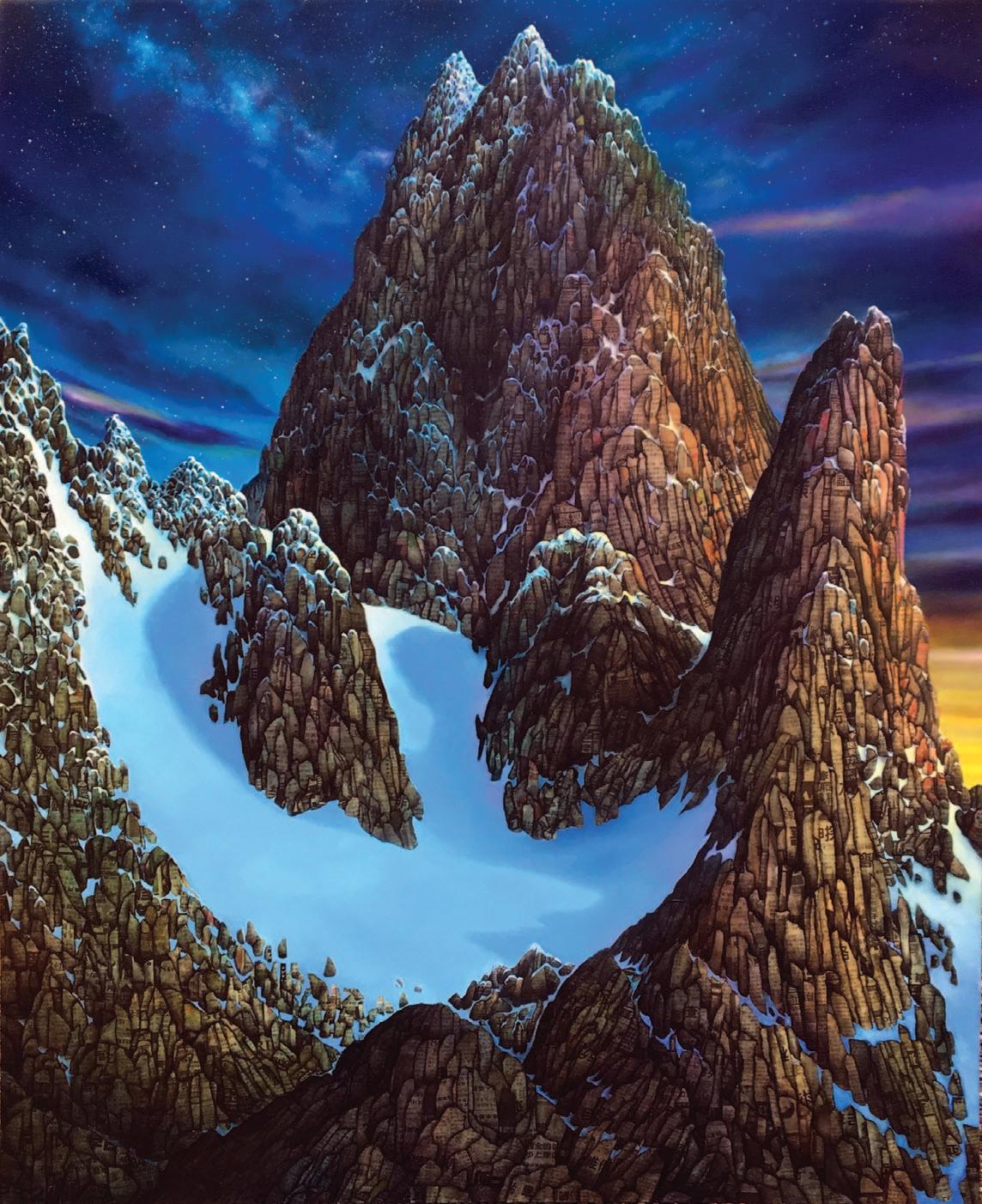

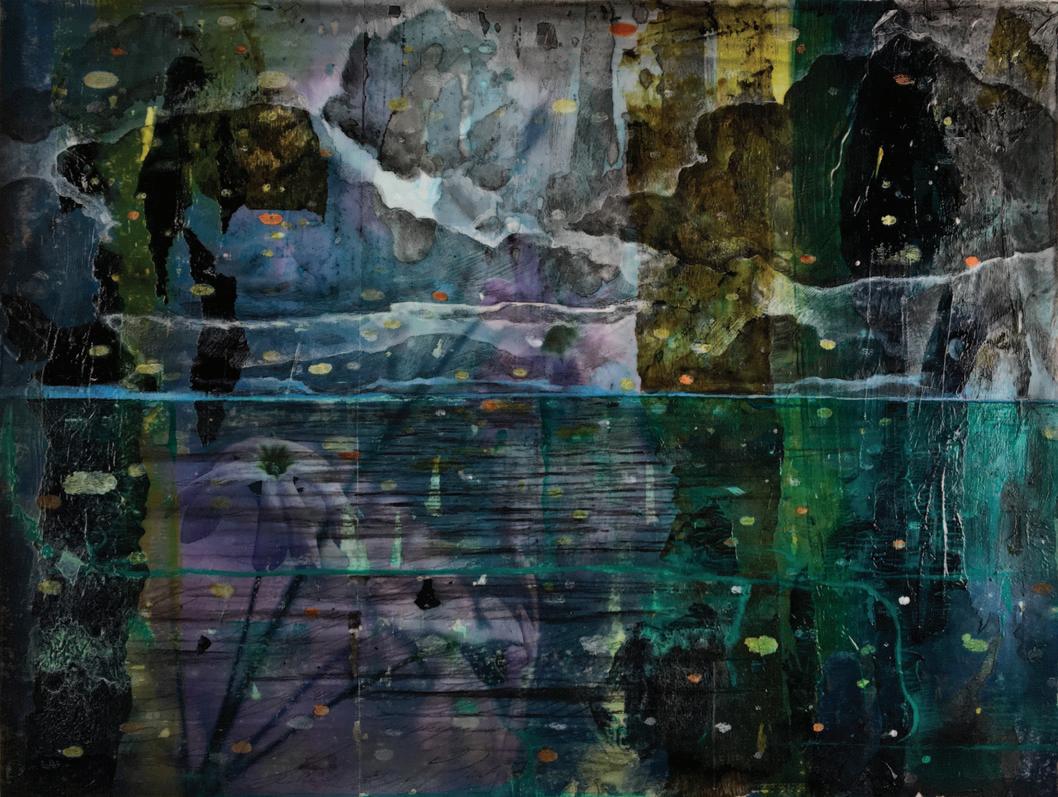
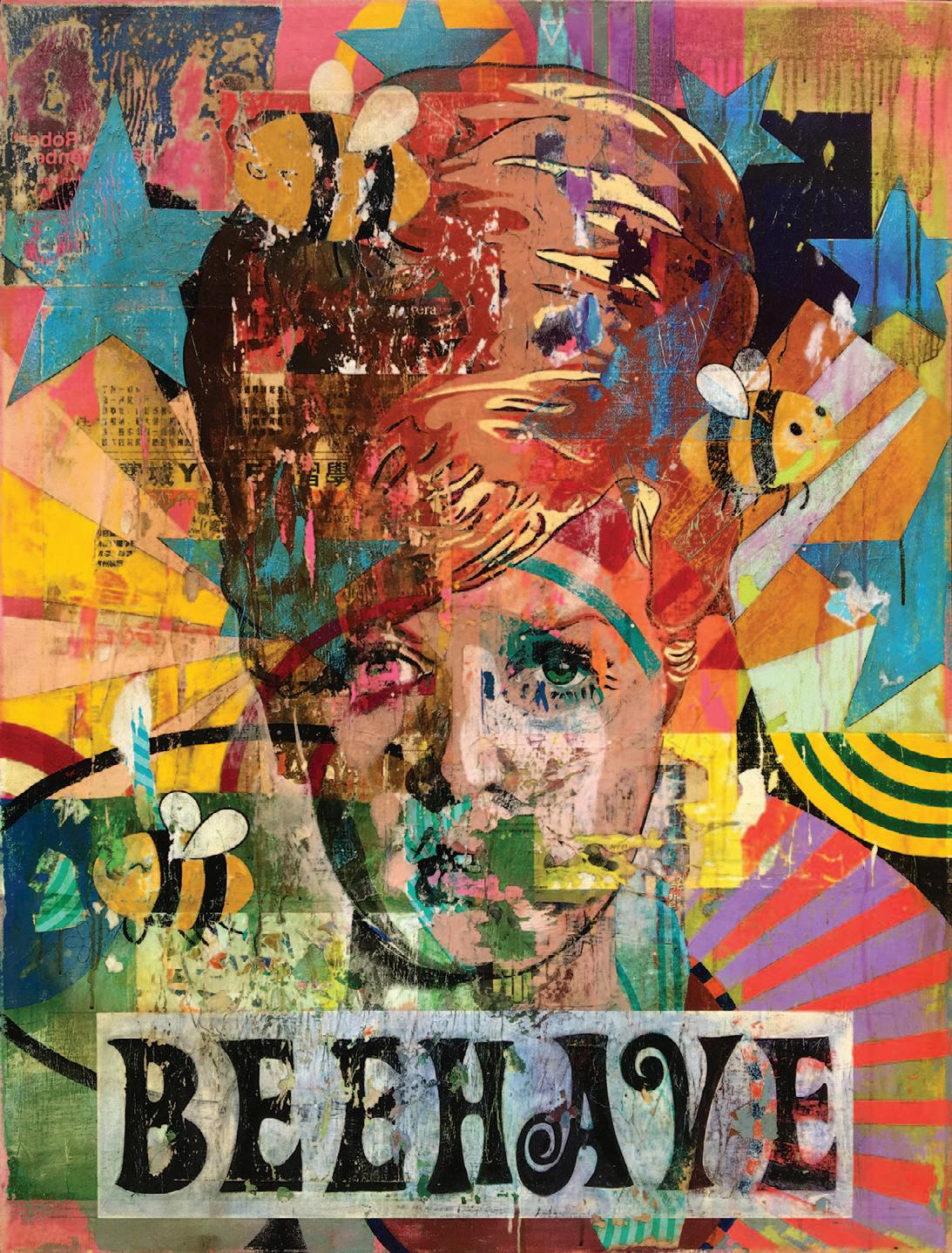
Murray’s painting Waterfall is reminiscent of lungs. Depression Cherry is based on a song and uses colors to denote emotions. Wade Out is based on a poem and depicts a person walking into a sea of flowers. The Smell of Marigolds is inspired by his childhood memory of the time to return to school in September when summer vacation is over.

I was often labeled a prolific artist who wanted to work all the time and was always busy. When COVID hit, I slowed down to reevaluate and reflect where I was with respect to my art. I realized I was just doing art as work. I had lost my enjoyment and felt disconnected and wondered why my art no longer made my heart race. Just as I desire to inspire my students, I am searching for my own authenticity. I want to find people, places, and things that inspire me, and am always in the process of determining how art connects to my heart.
His path forward may once again be influenced by his earliest experiences. Murray recalls his childhood when he played on his grandfather’s farm, and how his aunt inspired his love for all Asian art, including Zen and Asian gardens. He loves landscaping, gardening, planting trees, and placing rocks, and is considering landscape design architecture as the next chapter in his life.
Murray lives in Niskayuna with his wife, Kerry Tymeson, an elementary school teacher, an d their son Jackson who is a senior ma joring in both Education and Anthropology at Skid more College.
You can learn more about the artist at his website, www.christophermurrayart.com

